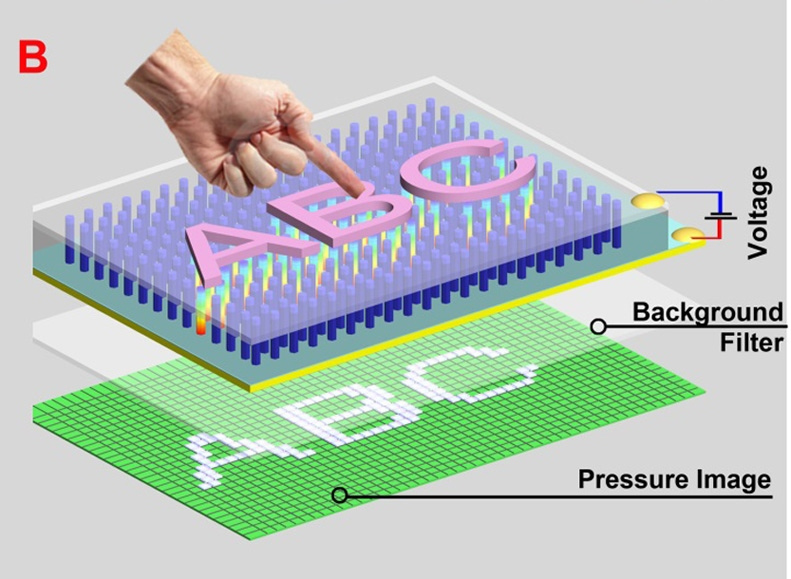New sensor signals optical skin
 A new kind of touch sensor is being developed which could provide a new level of speed and accuracy, converting mechanical input directly into an optical signal.
A new kind of touch sensor is being developed which could provide a new level of speed and accuracy, converting mechanical input directly into an optical signal.
The new device is being designed by teams at the Georgia Institute of Technology using thousands of nano-scale wires and electrons to create a densely packed cluster of sensors. The high number of tiny constituents means the sensor could work at extremely high resolution, and the high-speed capabilties of optical processing mean it could create data almost instantly.
The team say it could have applications in many fields currently without touch-capability, such as biological imaging and micro-electromechanical (MEMS) systems. Ultimately, it could provide a new approach for human-machine interfaces or the basis for an entirely artificial sense of touch.
The technology has been called piezo-phototronics and has been in development for since 2009. Individual zinc oxide (ZnO) nano-wires operate as tiny LEDs when placed under strain from the mechanical pressure, allowing the device to provide detailed information about the pressure being applied.
Zhong Lin Wang, Regents' professor and Hightower Chair in the School of Materials Science and Engineering at Georgia Tech explains: “When you have a zinc oxide nanowire under strain, you create a piezoelectric charge at both ends which forms a piezoelectric potential. The presence of the potential distorts the band structure in the wire, causing electrons to remain in the p-n junction longer and enhancing the efficiency of the LED.”
The increased efficiency in the diode is proportional to the strain created. Differences in the amount of strain translate to differences in light emitted from the point where the nano-wires contact a gallium nitride film.
A spatial resolution of 2.7 microns was recorded from tests so far, Prof Wang believes resolution could be improved by reducing the diameter of the wires, allowing more to be grown using a higher temperature fabrication process.
Details of progress so far have been published in Nature Photonics.








 Print
Print